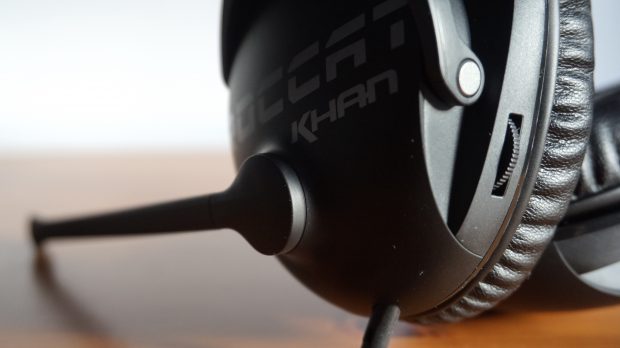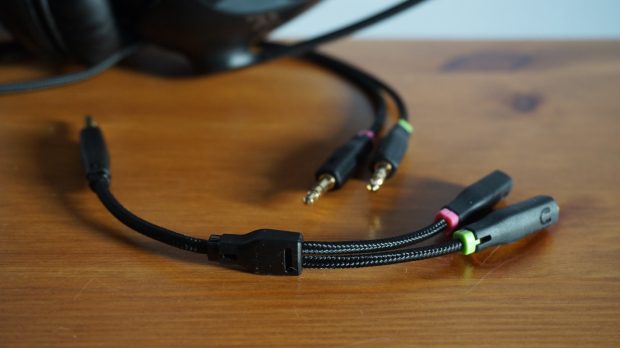
As gaming headsets go, the Roccat Khan Pro is delightfully diddly. Normally once I placed on a headset, it seems like I’m encasing my head in one thing akin to a motorbike helmet, so massive and cumbersome are their numerous ear cups that they’d in all probability present enough safety within the occasion of a roadside collision.
That could be due to my apparently pea-sized head, judging by the variety of changes I at all times need to make to get match, nevertheless it’s a uncommon factor certainly once I discover a headset that would nearly move for a daily pair of over-ear headphones. You know, if it didn’t have a mic poking out the aspect or gigantic logos emblazoned on the ear cups.
In reality, I nonetheless needed to put the Khan Pro on the tightest headband setting to make it snug, however the precise total footprint of the headset is blissfully small in comparison with one thing just like the monstrously over-sized Corsair Void Pro RGB, which means it takes up much less room in your desk and is simpler to chuck in a bag. It’s mild, too, weighing simply 230g.
That’s partly as a result of it’s largely constructed from nice swathes of plastic, however the excellent news is that mentioned plastic feels fairly strong. Even its spindly microphone seems like it could survive an unintentional sitting on, making you solely half grimace whenever you discover out it prices £70/$100.
Alas, regardless of the Khan Pro’s petite dimensions, my previous pal Aching Headband reared its ugly mug as soon as extra after about 30 minutes of damage time. The fake leather-based ear cups have been completely comfortable each with and with out my glasses on, however the reasonably sparse quantity of padding up prime meant I needed to hold shifting it round to alleviate the discomfort.

I additionally incessantly couldn’t discover the small quantity knob on the very again of the left ear cup. I’ve lengthy hair, and I normally tuck it behind my ears when carrying headphones so it doesn’t irritate me. Of course, this implies it falls simply in entrance of the quantity knob to type an nearly good curtain round it. It acquired simpler with time, however the knob itself isn’t very large both, making it simple to overlook whenever you’re blindly fumbling round for it.
I’m positive most of you gained’t have this drawback, in fact, however I’m equally sure that you just’d additionally choose to have a decent-sized quantity knob over the enormous ROCCAT KHAN brand hogging the remainder of the ear cup.
Fortunately, the fold-down, bendable microphone on that exact same ear cup is likely one of the Khan Pro’s strongest options. Audio was clear and pop-free once I took it for a test-run in Audacity and I didn’t hear any indicators of distortion regardless of many deliberate makes an attempt to try to perforate my ear drums.

Alas, the standard of the Khan Pro’s precise audio is considerably much less spectacular. Now, Roccat’s advertising and marketing the Khan Pro as a headset for them there esporters, so it could be that the drivers have been tuned to perform greatest in rip-roaring, crowd-cheering stadiums reasonably than the altogether extra quiet, solitary areas of your individual house. Unfortunately, the Khan Pro doesn’t assist Roccat’s Swarm software program, so there’s no method to tweak any form of equaliser settings to fit your preferences, so that you’re caught with what you get straight out of the field.
Either means, the Khan Pro left me underwhelmed. Game audio was… wonderful and didn’t disrupt different members of my family, nevertheless it wasn’t vastly atmospheric both. In Hellblade, for example, Senua’s inside voices definitely felt like they have been whispering in my ear, however their flat supply simply didn’t produce the identical form of creeping spine-tingling sensation I felt with the Void Pro. Instead, the whole lot simply felt a bit flat and uninspiring.
The similar factor occurred once I tried the Khan Pro with The Evil Within. Sloshing by way of the fifth chapter’s dingy sewers produced loads of crisp, tinkling water element, however the screams and moans of its monsters lacked the form of haunting depth I’d count on from having their death-rattles plunge straight down my ear canals.

The Khan Pro has two separate three.5mm connections, however comes with an adaptor in case you wish to plug it right into a laptop computer or monitor with a single headphone jack
Doom, in the meantime, felt nearly a bit overwhelming for the Khan Pro, its industrial backing music drowning in a basic moosh of thumping noise. Incoming fireball arcs and plasma pictures additionally didn’t appear to transition easily from one ear cup to the opposite as I moved round, and as an alternative popped between them like some kind of demonic tennis ball, making me really feel like I used to be consistently going deaf in a single ear.
Listening to extra basic music was a little bit of a letdown as properly, with the bass in Final Fantasy XV’s battle soundtracks turning right into a bland, muddy mess that each one however drowned out the excessive piano notes on prime. Drum beats in rock tracks additionally sounded fairly boring and flat, whereas vocals incessantly struggled to be heard above their backing devices.
If the Khan Pro was a fraction cheaper, I in all probability wouldn’t thoughts a lot. At someplace within the area of £30/$40, it could be an honest pair of stereo headphones with mic. But when it really prices greater than twice that quantity, it comes dangerously near Corsair’s Void Pro, which produces a significantly better sound and goes for simply £10 more in the UK and really $20 less for those in the US. The Khan Pro could have measurement on its aspect, however the shadow of Corsair’s jumbo headset is a troublesome one to flee.


